
The Italian Armed Forces encompass the Italian Army, the Italian Navy and the Italian Air Force. A fourth branch of the armed forces, known as the Carabinieri, take on the role as the nation's military police and are also involved in missions and operations abroad as a combat force. Despite not being a branch of the armed forces, the Guardia di Finanza is organized along military lines. These five forces comprise a total of 340,885 men and women with the official status of active military personnel, of which 167,057 are in the Army, Navy and Air Force. The President of the Italian Republic heads the armed forces as the President of the High Council of Defence established by article 87 of the Constitution of Italy. According to article 78, the Parliament has the authority to declare a state of war and vest the powers to lead the war in the Government.
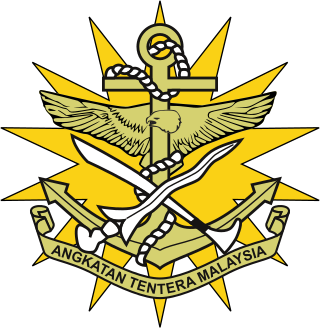
The Malaysian Armed Forces, are the armed forces of Malaysia, consists of three branches; the Malaysian Army, Royal Malaysian Navy and the Royal Malaysian Air Force. The number of MAF active personnel is 113,000 along with the reserve forces at 51,600. The Supreme Commander of the Malaysian Armed Forces is the Yang di-Pertuan Agong; the King of Malaysia.
The United Nations Iraq–Kuwait Observation Mission (UNIKOM) was established on April 9, 1991 following the Gulf War by Security Council Resolution 689 (1991) and fully deployed by early May 1991.

The Singapore Armed Forces (SAF) are the military of the Republic of Singapore, responsible for protecting and defending the security interests and the sovereignty of the country. A component of the Ministry of Defence (MINDEF), the armed forces have four service branches: the Army, Navy, Air Force, and Digital and Intelligence Service. An integrated force, it is one of the most capable, robust, technologically sophisticated and powerful militaries in the Southeast Asia region. The SAF is headed by the chief of defence force, appointed by the president of Singapore, on the advice of the Cabinet.

The Royal Australian Regiment (RAR) is the parent administrative regiment for regular infantry battalions of the Australian Army and is the senior infantry regiment of the Royal Australian Infantry Corps. It was originally formed in 1948 as a three battalion regiment; however, since then its size has fluctuated as battalions have been raised, amalgamated or disbanded in accordance with the Australian government's strategic requirements. Currently, the regiment consists of seven battalions and has fulfilled various roles including those of light, parachute, motorised and mechanised infantry. Throughout its existence, units of the Royal Australian Regiment have deployed on operations in Japan, Korea, Malaya, Borneo, Vietnam, Somalia, Rwanda, Cambodia, East Timor, the Solomon Islands, Iraq and Afghanistan.

The Singapore Army is the land service branch of the Singapore Armed Forces (SAF). The largest of the four branches of the SAF, the Singapore Army traces its origins to the 1st Battalion, Singapore Infantry Regiment, which was formed in 1957, when Singapore was still under British colonial rule. After Singapore's independence on 9 August 1965, the Singapore Army Bill was passed in Parliament on 23 December 1965, and National Service (NS) was subsequently introduced in 1967. Mostly made up of conscripts, the Singapore Army can mobilise all operationally-ready military reservists in the event of war or national exigencies.
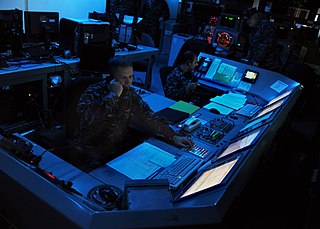
Military operations other than war (MOOTW) are military operations that do not involve warfare, combat, or the threat or use of violence. They generally include peacekeeping, peacebuilding, disaster response, humanitarian aid, military engineering, law enforcement, arms control, deterrence, and multilateralism.
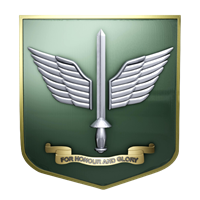
Commandos is the special forces formation of the Singapore Army responsible for conducting special operations. Commandos are tasked with infiltrating behind enemy lines by raiding and reconnaissance operations using airborne raids, helicopter assault and sea landings. The formation is made up of only one battalion, the 1st Commando Battalion, and is based in Hendon Camp.
The military history of Australia spans the nation's 230-year modern history, from the early Australian frontier wars between Aboriginals and Europeans to the ongoing conflicts in Iraq and Afghanistan in the early 21st century. Although this history is short when compared to that of many other nations, Australia has been involved in numerous conflicts and wars, and war and military service have been significant influences on Australian society and national identity, including the Anzac spirit. The relationship between war and Australian society has also been shaped by the enduring themes of Australian strategic culture and the unique security challenges it faces.

The Fiji Infantry Regiment is the main combat element of the Republic of Fiji Military Forces. It is a light infantry regiment consisting of six battalions, of which three are regular army and three are Territorial Force. The regiment was formed with the foundation of the Fijian armed forces in 1920. The regiment, as it is today, goes back to 1978 following Fiji's independence. The Royal Australian Infantry Corps and Royal New Zealand Infantry Regiment conduct yearly training seminars and exercises with the Fiji Infantry Regiment

Guards, also referred to as Guardsmen, is a rapid deployment elite infantry formation of the Singapore Army responsible for conducting air assault, expeditionary, and amphibious operations.

The SAF Military Police Command is the military police formation of the Singapore Armed Forces (SAF). Established as the Singapore Armed Forces Provost Unit (SAFPU) in 1966, its primary role is to police duties to uphold standards of discipline within the SAF, and to provide security coverage for key SAF military installations and the Ministry of Defence (MINDEF) headquarters at Bukit Gombak.

1st Battalion, Royal Australian Regiment is a regular motorised infantry battalion of the Australian Army. 1 RAR was first formed as the 65th Australian Infantry Battalion of the 34th Brigade (Australia) on Balikpapan in 1945 and since then has been deployed on active service during the Korean War, the Malayan Emergency, the Vietnam War, Unified Task Force in Somalia, East Timor, Iraq War and Afghanistan. Additionally, the battalion has deployed on peacekeeping and other operations to a number of countries including Japan, Rifle Company Butterworth, Timor Leste, Solomon Islands, Tonga and the Philippines. 1 RAR remains one of the Australian Army's most readily deployed units sending individuals and detachments to domestic, regional and other enduring operations. The battalion is currently based in Coral Lines at Lavarack Barracks, Townsville, Queensland, where it forms part of the 3rd Brigade.
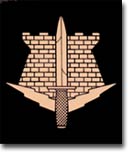
The Singapore Combat Engineers (SCE) is a formation of the Singapore Army. Combat Engineers provide mobility by bridging gaps and clearing minefields to facilitate speedy advance of troops into enemy territory, and counter-mobility by constructing obstacles such as anti-tank ditches to impede the enemy's movement. The Combat Engineers also construct trenches, drainage systems and other related infrastructure to enhance the survivability of troops during operations.

The Singapore Volunteer Corps or the Singapore Special Constabulary, was a militia unit established in 1854 as the Singapore Volunteer Rifle Corps. The Corps underwent several reorganisations and was known by various names throughout its history. It was renamed the People's Defence Force, the predecessor of the Singapore Armed Forces (SAF) in 1965.
The Straits Settlements Volunteer Force (SSVF) was a military reserve force in the Straits Settlements, while they were under British rule. While the majority of the personnel were from Singapore, some lived in other parts of the Settlements, including Penang, Province Wellesley, Malacca and Labuan.
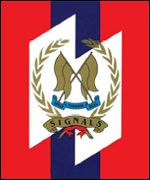
Signals is the formation of the Singapore Army responsible for communications on multiple platforms and local networking on the battlefield. It also supports the Singapore Armed Forces (SAF) by developing the capacity for network-centric warfare in the form of Integrated Knowledge-based Command and Control (IKC2) and Command, Control, Communications, Computers and Intelligence (C4I) operations.
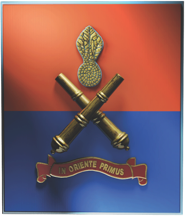
The Artillery is a formation of the Singapore Army, comprising four active battalions—the 20th, 21st, 23rd and 24th Battalions—and an undisclosed number of reservist battalions. The primary role of the Artillery formation is to deliver timely, accurate and effective fire in support of the manoeuvre force to accomplish missions. As an indirect fire support system, the gunners rely on the forward observer and target acquisition elements to provide the target's location, which is then passed to the command post to direct the gunners to fire.
The Republic of Singapore officially became the 117th member of the United Nations (UN) after its independence on August 9, 1965. From 2001 to 2002, Singapore held a rotational seat on the United Nations Security Council and has participated in UN peacekeeping/observer missions in Kuwait, Angola, Kenya, Cambodia and Timor Leste.
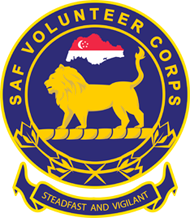
The Singapore Armed Forces Volunteer Corps (SAFVC) is a uniformed volunteer auxiliary branch of the Singapore Armed Forces. It was established on 13 October 2014 to allow Singaporean women, first generation permanent residents and naturalised citizens, all of whom would otherwise not be subject to an obligation to serve national service, to contribute their part towards Singapore's defence. It also aims to strengthen support for national service by understanding the duties of national servicemen.













